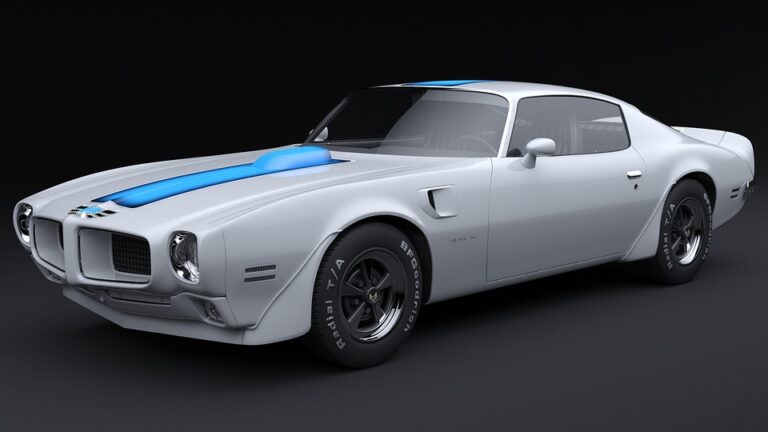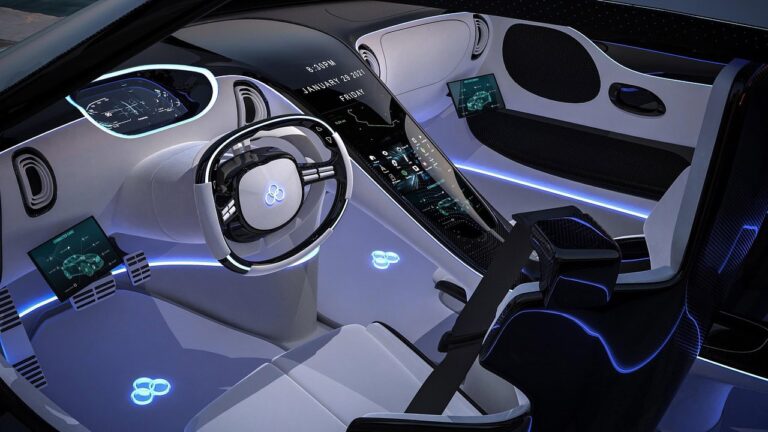Tech Integration in Modern Vehicles

From advanced safety systems to seamless connectivity, the fusion of technology and automobiles is transforming the way we perceive and interact with our vehicles.
The Evolution of Automotive Technology
The journey of technology in automobiles traces back to the introduction of basic electronic systems in the mid-20th century.
However, the real revolution began in the 21st century with the advent of advanced computing power, sensors, and connectivity options.
Today’s vehicles are equipped with sophisticated onboard computers capable of performing millions of calculations per second, enabling a range of features that were once deemed science fiction.
Infotainment Systems
One of the most noticeable advancements in modern vehicles is the development of infotainment systems. These systems offer drivers and passengers an array of features, including GPS navigation, music streaming, hands-free calling, and even access to social media.
The integration of voice recognition and touchscreens has made these systems more intuitive, reducing distractions while driving.
Advanced Driver Assistance Systems (ADAS)
Advanced Driver Assistance Systems have become a cornerstone of vehicle safety. Technologies such as adaptive cruise control, lane departure warning, and automatic emergency braking are designed to assist drivers in avoiding accidents.
These systems rely on a network of sensors, cameras, and radar to monitor the vehicle’s surroundings, providing real-time feedback and intervention when necessary.
Connectivity and the Internet of Things (IoT)
The rise of the Internet of Things (IoT) has brought about a new era of connectivity within vehicles. Modern cars are now equipped with internet connectivity, allowing them to communicate with other devices and infrastructure.
This connectivity opens up a world of possibilities, from remote diagnostics and software updates to real-time traffic information and vehicle-to-vehicle communication.
Telematics and Remote Monitoring
Telematics systems have revolutionized fleet management and individual vehicle monitoring. These systems collect and transmit data related to vehicle performance, location, and usage patterns.
For fleet operators, this means improved efficiency and reduced operational costs, while individual owners benefit from insights into their driving habits and maintenance needs.
Vehicle-to-Everything (V2X) Communication
Vehicle-to-Everything (V2X) communication is a groundbreaking innovation that enables vehicles to communicate with each other and with infrastructure such as traffic lights and road signs.
This technology promises to enhance road safety by providing drivers with real-time information about potential hazards and traffic conditions, ultimately reducing accidents and congestion.
Electric and Autonomous Vehicles
The integration of technology in modern vehicles is perhaps most evident in the development of electric and autonomous vehicles. These vehicles represent a shift towards sustainable and efficient transportation solutions, with technology playing a central role in their operation and functionality.
Electric Vehicle Technology
Electric vehicles (EVs) are at the forefront of the automotive industry’s push towards sustainability. Advances in battery technology, charging infrastructure, and energy management systems have made EVs a viable alternative to traditional gasoline-powered vehicles.
The ability to integrate renewable energy sources and smart grid connectivity further enhances the appeal of electric vehicles.
Autonomous Driving
Autonomous driving technology is rapidly advancing, with companies investing heavily in research and development. Self-driving cars rely on a combination of sensors, artificial intelligence, and machine learning algorithms to navigate and make decisions.
While fully autonomous vehicles are not yet commonplace, the technology is steadily progressing, promising a future where driving is safer and more efficient.
The Challenges of Tech Integration
Despite the numerous benefits, integrating technology into modern vehicles is not without its challenges. Issues such as cybersecurity, data privacy, and user acceptance need to be addressed to ensure a seamless transition to tech-enabled transportation.
Cybersecurity Concerns
As vehicles become more connected, they also become more vulnerable to cyber threats. Protecting sensitive data and ensuring the integrity of vehicle systems is paramount. Manufacturers are investing in robust cybersecurity measures to safeguard against potential attacks and breaches.
Data Privacy
The collection and transmission of data in connected vehicles raise concerns about privacy. Ensuring that personal and sensitive information is handled with care and transparency is essential to gaining consumer trust and compliance with data protection regulations.
The Future of Tech Integration in Vehicles
The future of tech integration in modern vehicles is both exciting and promising. As technology continues to evolve, we can expect even greater advancements in areas such as artificial intelligence, renewable energy, and smart city integration.
Artificial Intelligence and Machine Learning
Artificial intelligence and machine learning will play a crucial role in the future of automotive technology. These technologies will enable vehicles to learn from their environment and adapt to changing conditions, resulting in improved safety and efficiency.
Integration with Smart Cities
The concept of smart cities envisions a connected ecosystem where vehicles, infrastructure, and services are seamlessly integrated. This integration will lead to more efficient transportation systems, reduced congestion, and enhanced urban mobility.
Conclusion
The integration of technology into modern vehicles is a testament to the power of innovation and human ingenuity. As we continue to push the boundaries of what’s possible, the automotive landscape will evolve, driven by the desire for safer, more efficient, and sustainable transportation solutions.
By embracing these advancements, we can look forward to a future where technology and transportation work hand in hand to create a better world for all.






